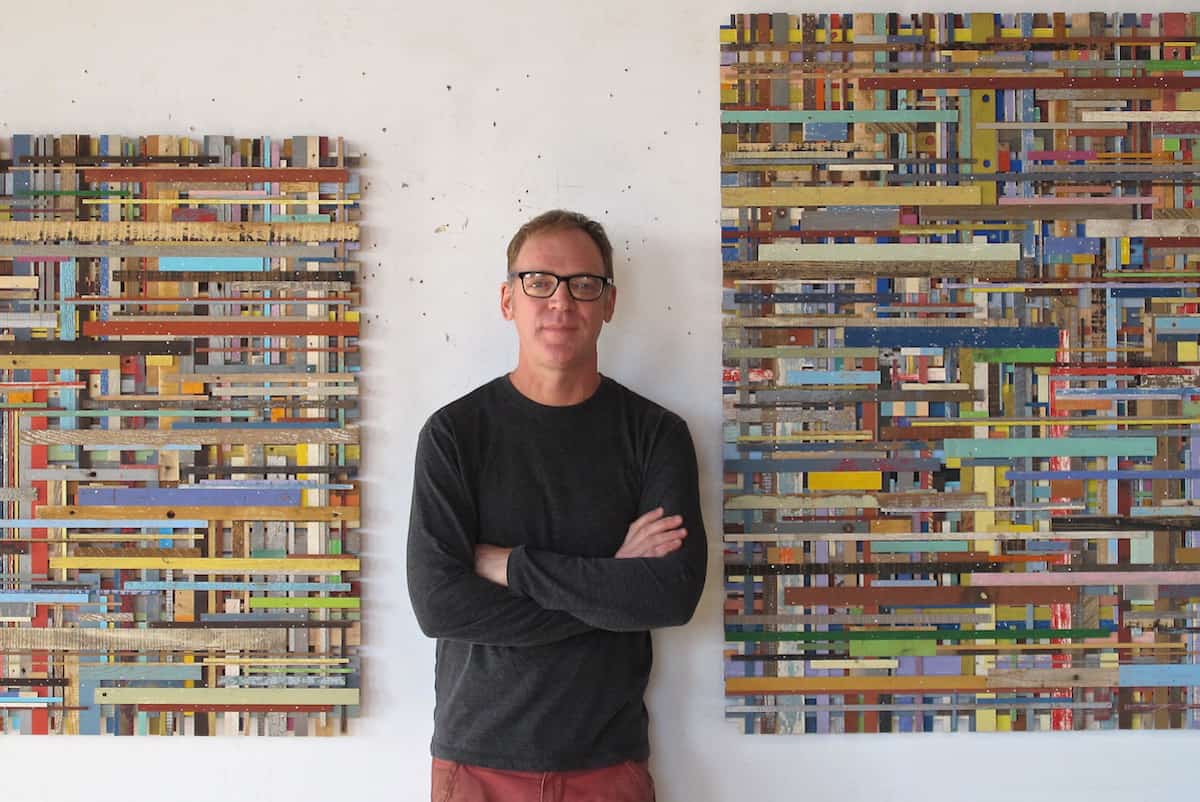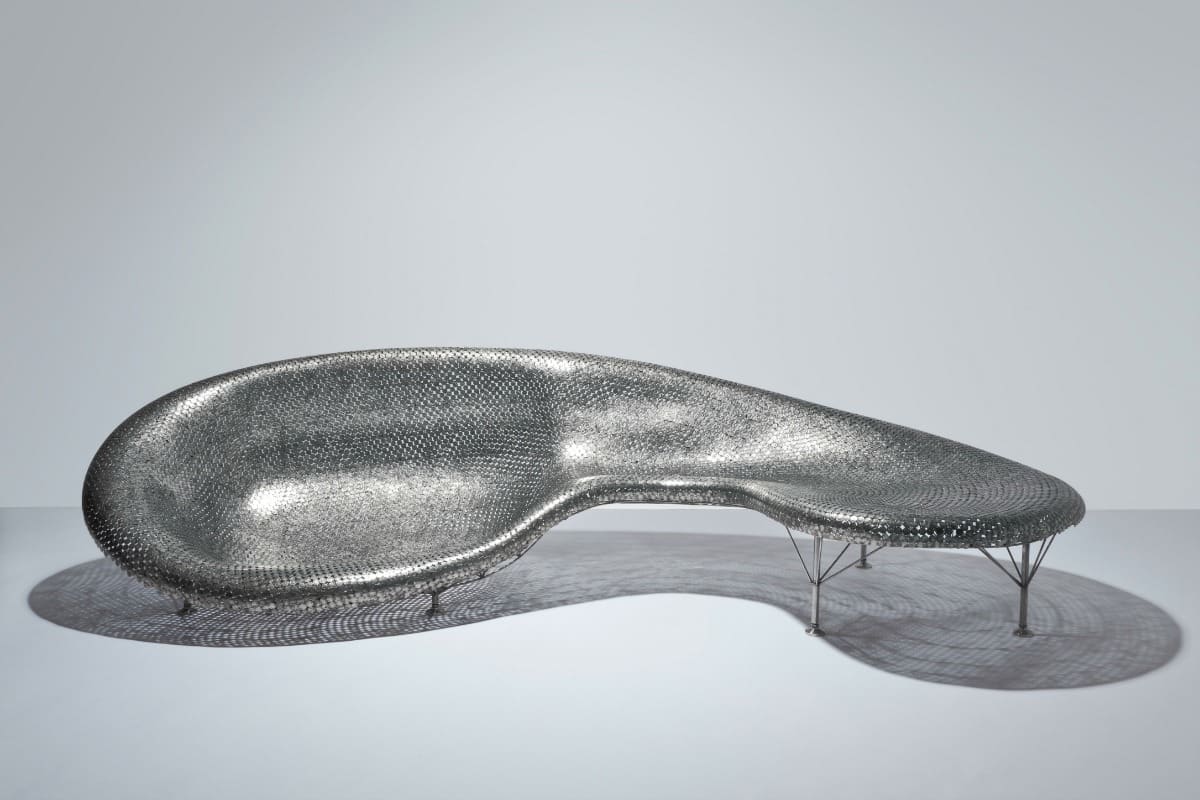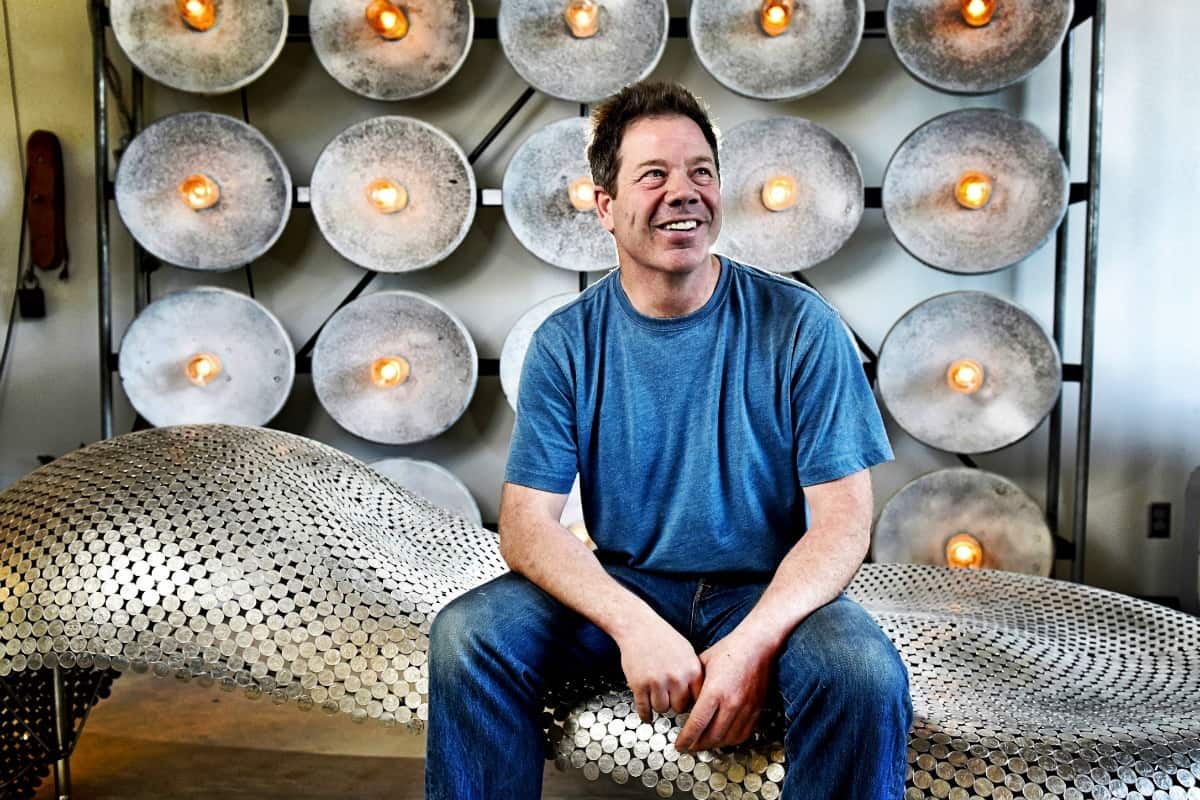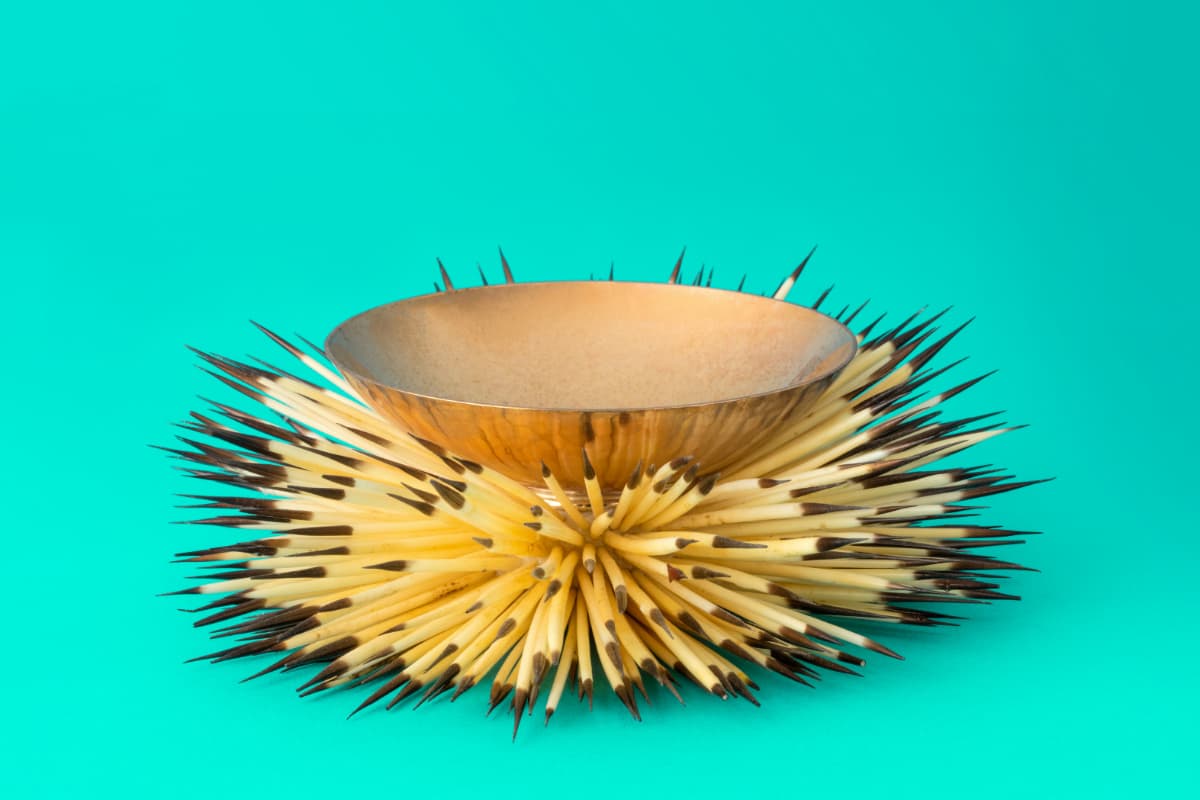Assemblage artist Duncan Johnson blends creativity and chance in his colorful paintings made from salvaged materials.
When we talk about paintings, we often talk about their surface. What never much seems to matter are the materials that support the painting: the substructure, the varnish, the glue or screws that subtly frame and uplift the work. But what if a painting’s support materials were essentially the same as its surface materials? Artist Duncan Johnson uses the same pieces of wood, sourced from the same country landfills, for the fronts and backs of his works; it’s how those pieces integrate that determine which piece fits what role, separating support from surface, and raw wood from beautifully repurposed fine-art constructions.
Born in Barre, VT, Johnson returned to the Green Mountain State from Brooklyn, NY three years ago, buying a three-story, former paper mill depot turned thrift store in the small town of Bellows Falls and transforming it into a dynamic, functional studio. Moving from a revitalized urban area with very little space or source material to a state filled with forests and dilapidated, old New England houses was a big benefit to a craftsman working with found wood. “Vermont has such better access of options,” says Johnson, “things just not available in the city, even in the poorer neighborhoods. Those have been gobbled by real estate investors; it’s impossible for some kinds of artists to thrive.”
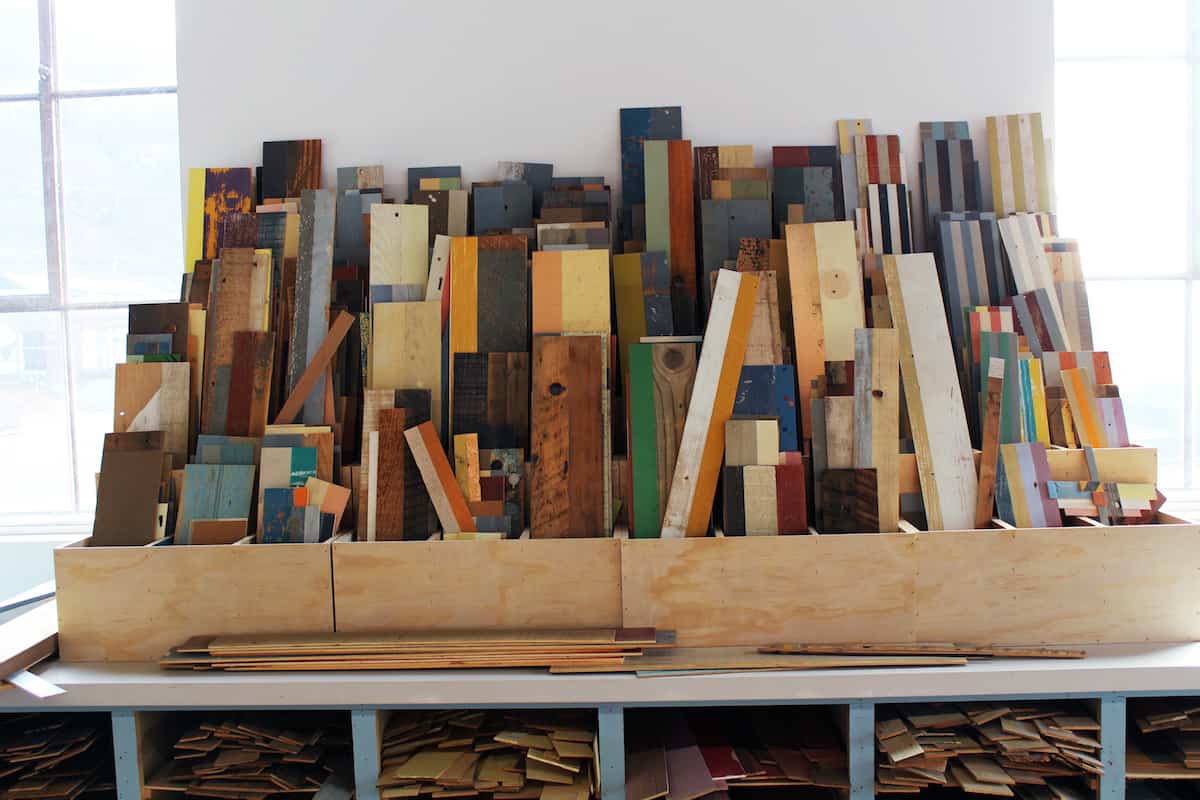
Found materials
Johnson is technically an assemblage artist, though he thinks of his current body of work as paintings. He uses regional materials, planes them down, then sets them together into new constructions. The pieces in his studio are like orphanages: each one a collection of abandoned waifs that had been rediscovered by Johnson, brought home and given a new life, a new family, and a new way of expressing themselves. “Each strip of wood has its own set of needs,” he explains, “and does its own kind of dance. I’m sort of a medium go-between, helping each piece figure out how to become part of the larger whole. Sometimes the pieces don’t want to comply, but it’s my job to convince them.”
The surface of Johnson’s finished artwork brings to mind a litany of master artists, including Piet Mondrian, Andy Goldsworthy, Louise Nevelson, and Richard Diebenkorn. It’s Diebenkorn, in particular, whose use of color, tonality, spacing, and pressurized weight that Johnson’s more recent work seems most indebted to. That said, Diebenkorn never worked with found wood, and was never forced to use what his walks in the country provided—making Johnson’s work all that much more remarkable given the limitations of chance (“I can only work with what I find”) that underlie his constructions.
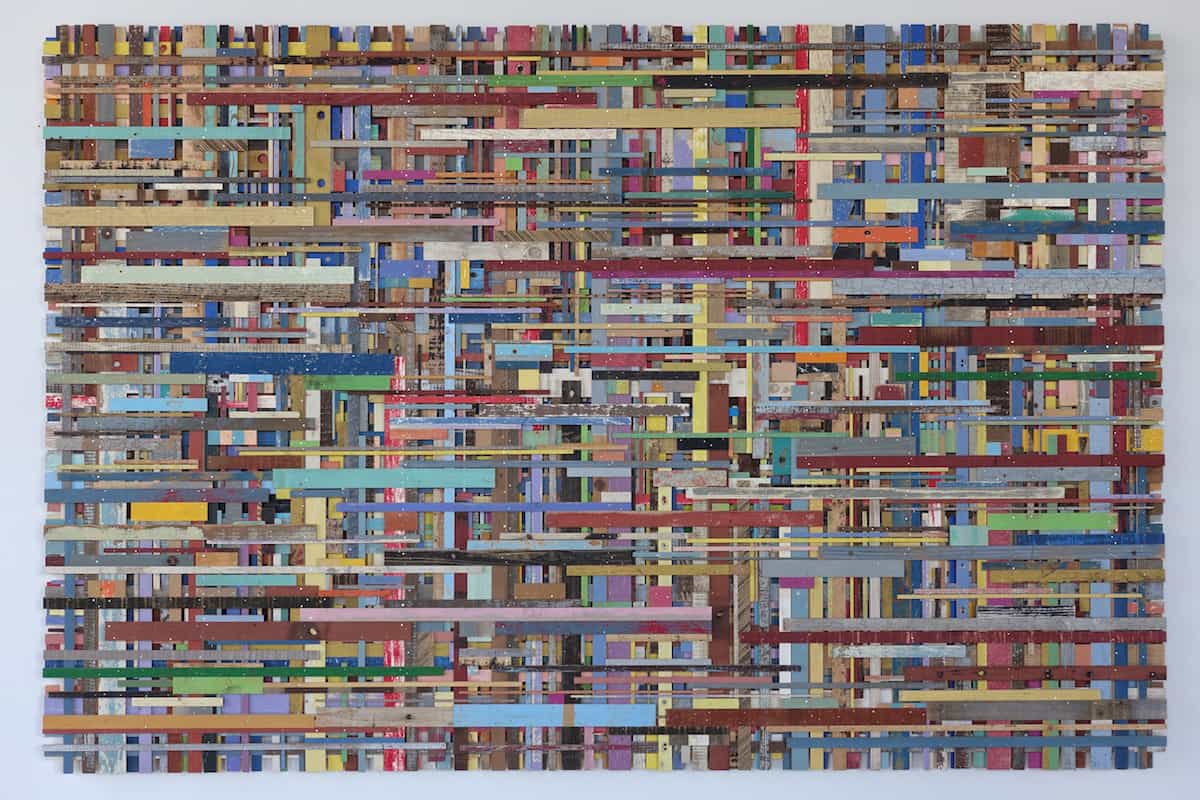
Newport Tartan, 2016
Johnson’s current work, the Tartan Series, focuses on laying wood strip over wood strip in an organic grid pattern, building a three-dimensional depth to his art that marries his earlier sculptural pieces with his current flatter, more painterly constructions. “It has multiple entry points.” says Johnson. “You can like the material, or the found color with nothing added to it. Old, new, rough, smooth, it’s tight, it’s loose. When artwork has a lot of layers, even contradictions, we’re drawn to it. It’s surprising to us.” Again, chance underlies these pieces, as does each strip’s almost conscious point of view as to what it is and how it wants to play along. “There’s control and there’s no control. Pieces take on a life of their own. Letting go of your ego—I find that fascinating. Maybe there’s a certain laziness, but I just like to let the process take over.”

